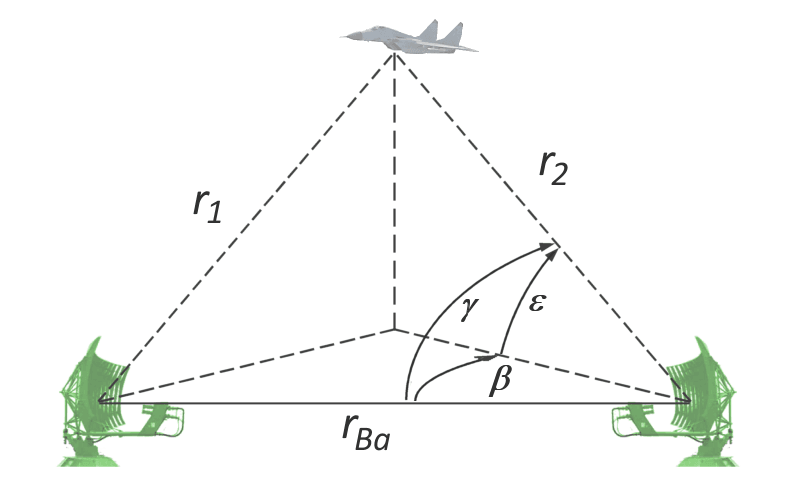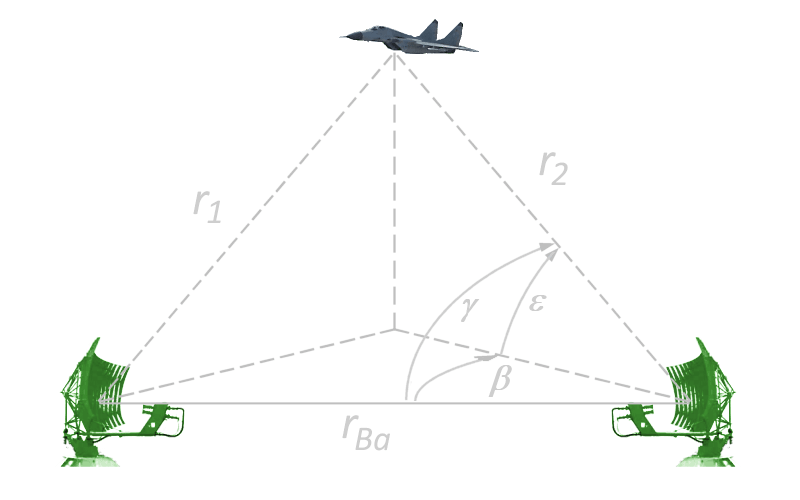Coordinate determination with bistatic radar

Figure 1: Coordinate determination with bistatic radar
The transmitted pulse reaches the receiver in two ways: on the direct route and after reflection at the target. The receiving radar measures the total distance rΣ = r1 + r2, and the azimuth angle β and the elevation angle ε of the backscattered signal.
In order to calculate the distance, the radar must know the time at which the transmitting radar emits active. This time reference can be calculated because the transmitted signal is received on a direct path too, and the distance rBa between these two radars is known.
The distance rΣ determines the position of the target on the surface of a spheroid, whose foci are the transmitting and the receiving antenna. The target is at the intersection of the surface of this spheroid with the straight line that characterizes the direction from which the reflected signal arrives. The distance to the aim of the receiver antenna r2 can be determined using the cosine law and the measured total distance rΣ:
| r12 = r22 + rBa2 - 2r2 · rBa · cos γ | |
| r1 + r2 = rΣ | (1) |
This system of equations with the two unknown quantities r1 and r2 can be transformed to the following equation:
| r2 = | rΣ2 - rBa2 | (2) |
| 2rΣ (1 - cos γ) |
The size of the angle γ is determined from the measured angles β and ε on the basis of the trigonometric relationship between these three angles:
| γ = arcos( cos β · cos ε) | (3) |

